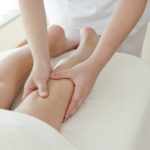Looking for Low-Cost Massages?
Part of my New Year’s resolution was to keep my stress level down, and massage works great for me. The problem is I can’t afford massage on a regular basis. Are there any secret bargains in bodywork?
Andrew Weil, M.D. | July 13, 2004

Massage is wonderfully relaxing and a great way to counter stress. It is also therapeutic. Research has shown that massage can improve breathing in asthmatic children, lower levels of stress hormones in AIDS patients and help relieve tension headaches caused by contracting head, neck or facial muscles.
But you’re right: massage can be costly. My medical partner, Dr. Brian Becker, originally trained as a massage therapist. He tells me there?s a longstanding joke that the stress of working to pay for a massage keeps many people from relaxing on the table. To enjoy the benefits of massage on a budget, he suggests the following.
- Weekend courses/workshops: This is the short version of sending your spouse or significant other to massage school. Weekend workshops are often set up for couples, and the basics of massage can be learned in a few sessions. The better courses are taught at formal schools of massage, but there are many excellent instructors out there. One of the best ways to learn to give a massage is to receive them, and then practice the techniques on yourself or a friend. You can visit the Web site of the American Massage Therapy Association (www.amtamassage.org) to find an accredited school near you. Also check this site for weekend classes or instructor referral.
- Massage clinics: These can be a real bargain if you live near a school where massage therapists are trained. Prices for a massage at a clinic depend on whether you request a professional, a graduate or a student therapist. A licensed therapist will probably cost you about $60 an hour, but you may be able to pay about half of that if you’re willing to let a student practice on you. Along with working in the clinic, many formal schools of massage therapy also require therapists to log independent massages as part of their training. These students are out there looking for bodies to practice on, and often cannot charge a fee as they are not yet licensed. Some student practitioners are outstanding, and supporting a student through school with a tip for the practice time may earn you a discounted rate after he or she graduates.
- Self-massage: Massaging your own muscles costs you nothing, and with good technique can be quite effective. Massage therapists frequently use a tennis ball for those hard to reach places on their own backs and shoulder blades. Along the same line is the Healthy Body Ball (www.healthybodyball.com). This is a self-massage tool you can use to access trigger points just about anywhere. Designed by a massage therapist, it looks like a ball with protruding circular nodules that resemble fat, round, blunt spikes. You put the ball between your body and the floor or a chair back and move against it to get your “massage.”
- Bargaining or Bartering: The cost of massage therapy isn’t necessarily carved in stone, particularly if your therapist is a solo practitioner. You could always ask for a quantity “discount” if you’re willing to commit to a series of massages. Or, you may be able to barter – trade your services, expertise, or discounts on products you sell for massages or for a break in the price.
- Explore Other Ways to Unwind: Even people who can afford it usually don’t have time for regular massages. Try breathing exercises, progressive relaxation, visualization, meditation or exercise as inexpensive alternatives to relieve stress.Andrew Weil, M.D.










